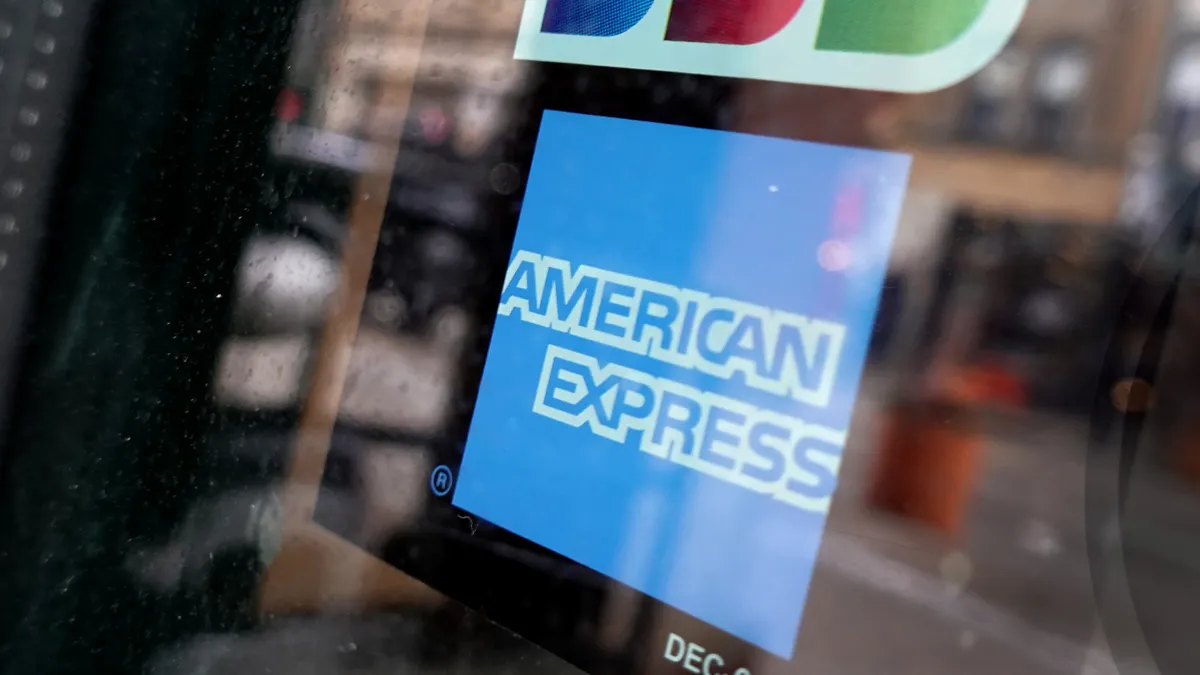Dive Brief:
- American Express has added facial and fingerprint recognition to SafeKey, the company’s fraud prevention service, to mitigate fraud and simplify the online checkout process, the card issuer announced Thursday.
- When Amex’s U.S. cardholders shopping online use a device that supports fingerprint and facial recognition, customers will be prompted to enable biometric identification. The company developed the capabilities using online authentication technology from the FIDO Alliance, a cybersecurity organization, and the World Wide Web Consortium, the cybersecurity and privacy standards organization, according to a news release.
- New York-based Amex is piloting the service with a “fraction” of the company’s U.S. consumer cardholders, according to a spokesperson for the company. The pilot began late last month. The company plans to roll out fingerprint and facial recognition for all U.S. consumer cardholders early next year, the press release said.
Dive Insight:
American Express aims to speed up identification checks for online transactions with its fraud prevention service, and the addition of biometric capabilities could further that goal.
Consumers have grown weary of passwords and PINs as they’ve become more comfortable unlocking mobile and other devices with their faces or fingerprints. The use of biometrics to authenticate payments is poised to bring greater speed and security to transactions, consultants have said.
Currently, Amex cardholders may be asked to confirm whether they’re actually making a purchase through the use of codes or app notifications. With this rollout, face or fingerprint identification become additional options to authenticate purchases.
The new authentication features will be available on all major web browsers, iOS and Android platforms, according to the press release.
“We’re focused on developing solutions that keep us one step ahead of fraudsters, so our Card Members can shop safely online,” John J. Kieley, vice president of digital identity and commerce experiences at Amex, said in a statement. “Now, checking out safely and securely is as easy as unlocking your phone. SafeKey’s biometric facial and fingerprint recognition minimizes friction while maximizing security for our Card Members at checkout.”
Amex’s pilot is only for online checkout. A spokesperson didn’t respond to an inquiry about whether the company has plans to extend the capabilities to in-store settings.
On the brick-and-mortar commerce side, e-commerce giant Amazon’s palm payment technology has expanded beyond Whole Foods locations: It’s being used in some U.S. stadiums and airport stores, and is being tested in restaurant chain Panera Bread. Card network Mastercard has also piloted biometric checkout capabilities in Brazil.
Payments firms are paying close attention to fraud, given the rise of digital payments across business-to-business, real-time and peer-to-peer transactions.
In its biannual threats report, Visa said it found a spike in ransomware attacks, enumeration attacks and card-not-present fraud earlier this year, but overall fraud rates remain low. One of the factors contributing to the uptick in some forms of payment fraud is artificial intelligence, which has made identifying and preventing new scams more difficult, Michael Jabbara, vice president and global head of fraud services at Visa, told Payments Dive via a spokesperson.
Meanwhile, Amex has also seen fraudsters target elderly consumers via gift card scams, CEO Steve Squeri said during an investor conference in June.
As card companies work to beat back fraud, it’s a problem that’s only projected to grow over the coming years. By 2027, financial crimes and fraud could cost banks and financial firms globally $40.62 billion, according to an ACI Worldwide report released in June. With this year’s launch of the Federal Reserve’s real-time payment system, FedNow, the rate of real-time payment volume is predicted to grow 32.6% by 2027, ACI said in its report.
Correction: This story has been updated to reflect Kieley’s current title.










